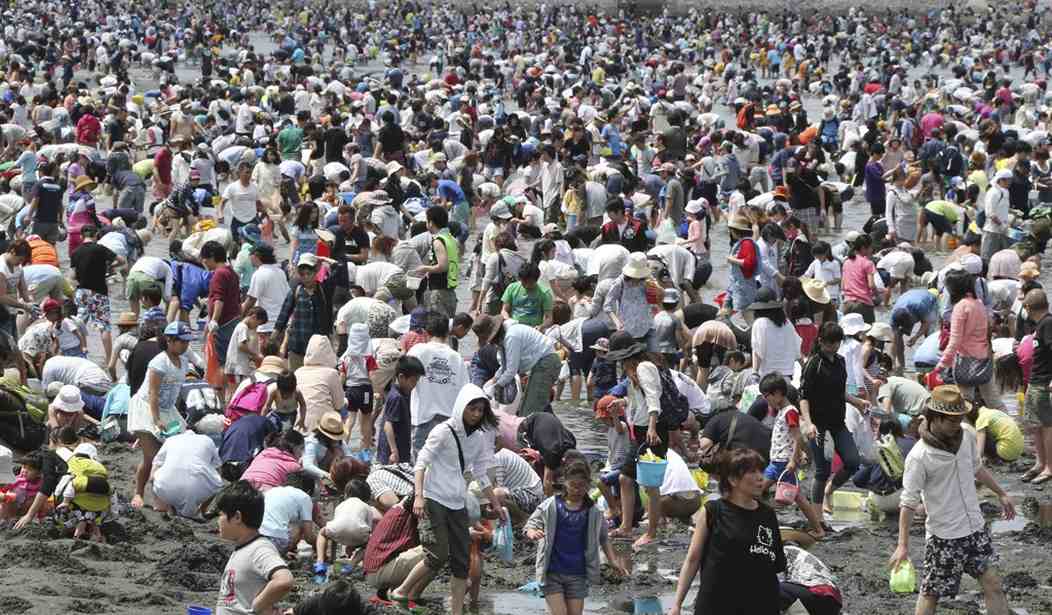“There are not enough people. I can’t emphasize this enough ... And I think one of the biggest risks to civilization is the low birth rate and the rapidly declining birth rate,” argued the Tesla CEO Elon Musk last year. He has returned to the subject of “population collapse” on several subsequent occasions. Contrast Musk’s position with that of the Congresswoman Alexandria Ocasio-Cortez, who told her Instagram viewers that “It is basically a scientific consensus that the lives of our children are going to be very difficult, and it does lead young people to have a legitimate question: is it OK to still have children?”
Humans impact the world in both good and bad ways. In a new book, Superabundance: The Story of Population Growth, Innovation, and Human Flourishing on an Infinitely Bountiful Planet, my co-author and I have revisited a subject that’s intimately connected to population growth: resource scarcity. This debate goes back to the 5th century BC, with both Confucians and the Greeks agreeing that population growth needed to be controlled lest excessive fecundity overwhelmed the food supply and famine ensued. The English prelate, Thomas Malthus, resurrected the idea in his influential Essay on the Principle of Population in 1798, and people have been arguing about the advisability of population growth ever since.
The debate has given us the Chinese one-child policy (1980–2015) and mass sterilizations during India’s Emergency (1975–1977). HBO’s Bill Maher joked a couple years back that “the great under-discussed factor in the climate crisis is there are just too many of us and we use too much shit.” More seriously, Patrick Crusius, the shooter of 22 people in an El Paso Walmart wrote, “Our lifestyle is destroying the environment of our country. But G** d*** most of y’all are just too stubborn to change your lifestyle. So the next logical step is to decrease the number of people in America using resources. If we can get rid of enough people, then our way of life can become more sustainable.” The stakes, in other words, are as high as they have ever been.
Recommended
The relative scarcity of resources is typically measured by looking at prices. If prices rise, resources are deemed to be getting scarcer, and, if they fall, more abundant. The media sometimes scare their readers by reporting “nominal” prices (hence all the headlines about food and fuel prices being at a record highs), rather than “real” prices, which take into account inflation. It was on the inflation-adjusted prices of five metals that the Stanford University biologist Paul Ehrlich and the University of Maryland economist Julian Simon bet $1,000 in 1980. If the real prices went down over the next decade, they agreed, Ehrlich would pay Simon. If they went up, Simon would pay Ehrlich. Ehrlich lost.
The problem with real prices is that they ignore changes in incomes. Typically, though not always, individual incomes increase faster than inflation. That’s because people tend to grow more productive over their lifetimes and across time. Contrast the productivity of workers equipped with shovels and those driving giant excavators. While real prices are measured in dollars and cents, time prices are measured in hours and minutes. To calculate a time price, all you need to do is to divide the nominal price of a good or service by the nominal hourly income. That tells you how long you must work to afford something.
Consider U.S. manufacturing workers. Between 1900 and 2018, the time prices of pork, rice, cocoa, wheat, corn, coffee, lamb and beef fell by 98.4%, 97.6%, 97.1%, 96.7%, 96.1%, 93.8%, 78.6% and 75.5% respectively. That means that the same length of time that bought 1 pound of each commodity, now buys 62.6, 41.1, 34.8, 30.5, 25.6, 16.2, 4.7 and 4 pounds. While people cannot eat rubber, aluminum, potash or cotton, the prices of these commodities are valuable inputs in the production processes that impact the prices of goods and services, and hence the overall standard of living. Their time prices fell by 99.4%, 98.9%, 98.2% and 95.8% respectively. All the while, the population of the United States rose from 23 million to 328 million.
What happened to global time prices of resources? They fell by 84 percent between 1960 and 2018. The personal resource abundance of the average inhabitant of the globe rose from 1 to 6.27 or 527 percent. Put differently, for the same time of work that he or she could buy one item in the basket of resources we looked at, he or she can now get more than six. Over that 58-year period, the world’s population increased from 3 billion to 7.6 billion.
Surprisingly, we also found that personal resource abundance increased faster than population in all 18 randomly chosen datasets that we analyzed. We call that relationship “superabundance.” On average, every additional human being created more value than he or she consumed. But how does all that superabundance happen?
Musk offered a clue to the answer in the above-mentioned speech. He noted that “I don’t know that we should really try to live for a super long time. It is important for us to die because most of the times people don’t change their mind, they just die.” Superabundance, in other words, is a product of the human mind. It is ideas that lead to inventions, which, after they have been tested in the marketplace, lead to innovations that drive economic growth and increase the standard of living.
But large populations are not enough to produce superabundance—just think of the poverty in China and India before liberalization. To innovate, people must be allowed to think and to act. Such people can create tremendous value.
In conclusion, the world is a closed system in the way that a piano is a closed system. The instrument has only 88 keys, but those keys can be played in a nearly infinite variety of ways. The same applies to our planet. The Earth’s atoms may be fixed, but the possible combinations of those atoms are infinite. What matters is not the physical limits of our planet, but human ability to reimagine the use of resources that we already have.
—Marian L. Tupy is a Senior Fellow at the Cato Institute, and co-author (with Gale L. Pooley) of the new book, Superabundance: The Story of Population Growth, Innovation, and Human Flourishing on an Infinitely Bountiful Planet (Cato Institute, August 31, 2022). To learn more, visit www.Superabundance.com

























Join the conversation as a VIP Member